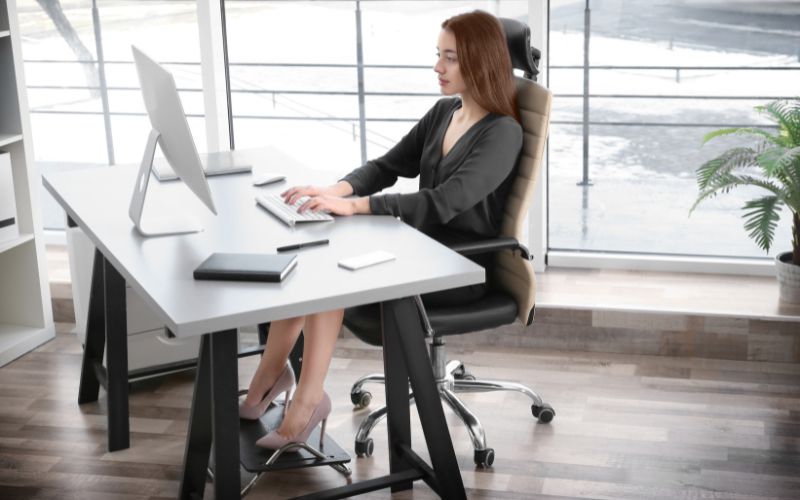The Importance of Ergonomic Positions
What are Ergonomic Positions?
Ergonomic positions are those that promote good posture, reduce stress on the body, and help to prevent injury. They are essential for anyone who spends extended periods of time sitting or standing in the same position.
Proper ergonomic positions can help to reduce the risk of musculoskeletal disorders, such as tendinitis, carpal tunnel syndrome, and back pain.
The Benefits of Ergonomic Positions
There are many benefits to using ergonomic positions throughout the day. These include:
- Improved posture
- Reduced stress on the body
- Increased comfort
- Reduced risk of injury
- Improved productivity
Top Ergonomic Positions for a Healthy and Comfortable Workday
Proper Chair Height
Your chair should be adjusted so that your feet are flat on the floor, and your knees are at a 90-degree angle. Your hips should be level with or slightly higher than your knees, and your back should be straight.
Monitor Position
Your monitor should be at eye level, and about an arm’s length away from your body. This helps to reduce eye strain and neck pain.
Keyboard Position
Your keyboard should be directly in front of you, and at a height that allows your elbows to be at a 90-degree angle. This helps to reduce strain on your wrists and forearms.
Mouse Position
Your mouse should be placed close to your keyboard, and at the same height. This helps to reduce strain on your wrist and forearm.
Phone Position
If you frequently use the phone while working, consider using a headset or speakerphone. This helps to reduce strain on your neck and shoulders.
Footrest
If your feet do not reach the floor, use a footrest to support them. This helps to reduce strain on your lower back and legs.
Lumbar Support
Use a lumbar support pillow or a chair with built-in lumbar support to help maintain the natural curve of your lower back.
Stretching
Take frequent breaks to stretch your arms, legs, and back. This helps to reduce stiffness and improve circulation.
Standing Desk
Consider using a standing desk to reduce the amount of time you spend sitting. This can help to improve posture and reduce the risk of back pain.
Exercise
Regular exercise can help to strengthen your muscles and reduce the risk of injury. Consider incorporating stretching, strength training, and cardiovascular exercise into your daily routine.
FAQ
What is the best ergonomic position for typing?
The best ergonomic position for typing is one that allows your wrists to remain straight and your elbows to be at a 90-degree angle. This helps to reduce strain on your wrists and forearms.
Can ergonomic positions help with back pain?
Yes, ergonomic positions can help to reduce the risk of back pain by promoting good posture.










